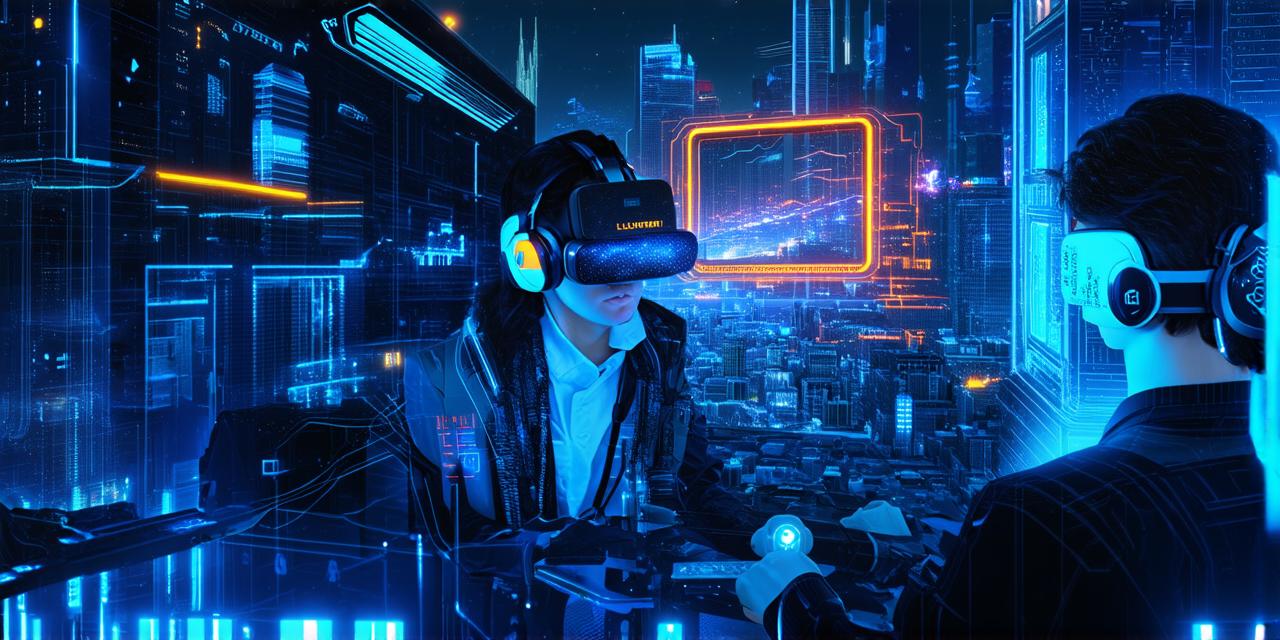Benefits of Virtual Reality
Virtual reality provides an immersive environment that allows learners to experience real-world scenarios in a safe and controlled setting. This can be particularly useful for subjects such as medicine, where students can practice surgical procedures or explore the human body in detail.
1. Enhanced learning and knowledge acquisition
Virtual reality provides an immersive environment that allows learners to experience real-world scenarios in a safe and controlled setting. This can be particularly useful for subjects such as medicine, where students can practice surgical procedures or explore the human body in detail.
2. Improved mental health and wellbeing
Virtual reality has been shown to have positive effects on mental health and wellbeing. For example, it can be used as a tool for treating anxiety disorders, such as phobias or post-traumatic stress disorder (PTSD). In addition, VR can also help reduce stress and improve mood by providing a sense of relaxation and escapism.
3. Enhanced creativity and problem-solving skills
Virtual reality provides a unique environment for creative expression and problem-solving. For example, architects can use VR to visualize their designs in a 3D space, allowing them to make changes and adjustments in real-time. Similarly, game designers can use VR to create immersive gaming experiences that require players to think creatively and solve complex problems.
4. Increased accessibility for people with disabilities
Virtual reality can help people with disabilities overcome physical or cognitive limitations that might prevent them from participating in certain activities. For example, individuals with mobility impairments can use VR to experience outdoor activities such as hiking or skiing, while those with cognitive difficulties can benefit from VR-based therapy programs that improve memory and attention span.
5. Cost-effective training solutions
Virtual reality provides a cost-effective alternative to traditional training methods, which can be time-consuming and expensive. By using VR, businesses can provide their employees with immersive training experiences that simulate real-life scenarios, allowing them to learn new skills and improve performance in a safe and controlled environment.
6. Improved social connections and communication
Virtual reality can help people connect with others in new and meaningful ways, regardless of geographical location. For example, VR-based social platforms allow users to interact with each other in virtual environments, providing opportunities for socialization and collaboration. In addition, VR can also be used as a tool for improving communication skills, such as public speaking or language learning.
Case Studies and Personal Experiences
1. The use of VR in healthcare
One example of the benefits of VR in healthcare is its use in pain management. Virtual reality can be used to distract patients from pain by providing a sense of immersion and relaxation.
2. The use of VR in education
Virtual reality can be used to enhance the learning experience in various subjects, from science and engineering to history and art. For example, virtual field trips allow students to explore museums, historical sites, and natural wonders without leaving the classroom. In addition, VR can also be used as a tool for language learning, allowing students to practice speaking and listening skills in immersive environments.
3. The use of VR in gaming and entertainment
Virtual reality has revolutionized the gaming industry, providing players with immersive experiences that blur the line between reality and fantasy. For example, VR-based games such as “Beat Saber” and “Job Simulator” provide a unique sense of engagement and interactivity that traditional gaming cannot match. In addition, VR has also been used to create experiential marketing campaigns that provide customers with memorable experiences and increase brand awareness.
Structure and Organization
In order to fully understand the benefits of virtual reality, it is important to consider the various ways in which it can be applied across different industries. By exploring the key benefits of VR and providing examples of how they can be leveraged in practice, this guide aims to provide a comprehensive overview of the potential applications and benefits of this exciting technology.
Research and Experiments
Numerous studies have shown that virtual reality can have positive effects on mental health, learning, and communication. For example, a study published in the Journal of Medical Internet Research found that VR-based exposure therapy was effective in reducing symptoms of PTSD in veterans. Similarly, research has shown that VR can improve memory retention and attention span, particularly in older adults.
FAQs
What is virtual reality?
Virtual reality is a technology that allows users to experience a simulated environment in which they can interact with objects and other users in real-time.
Summary
Virtual reality is a rapidly growing technology that has the potential to provide numerous benefits across various industries. As a developer, you have the opportunity to create immersive experiences that can enhance learning, mental health, creativity, problem-solving skills, accessibility, cost-effective training solutions, social connections, and communication. By considering the key benefits of VR and providing examples of how they can be leveraged in practice, this guide aims to provide a comprehensive overview of the potential applications and benefits of this exciting technology. With careful planning and execution, virtual reality has the potential to revolutionize the way we live, work, and play.
